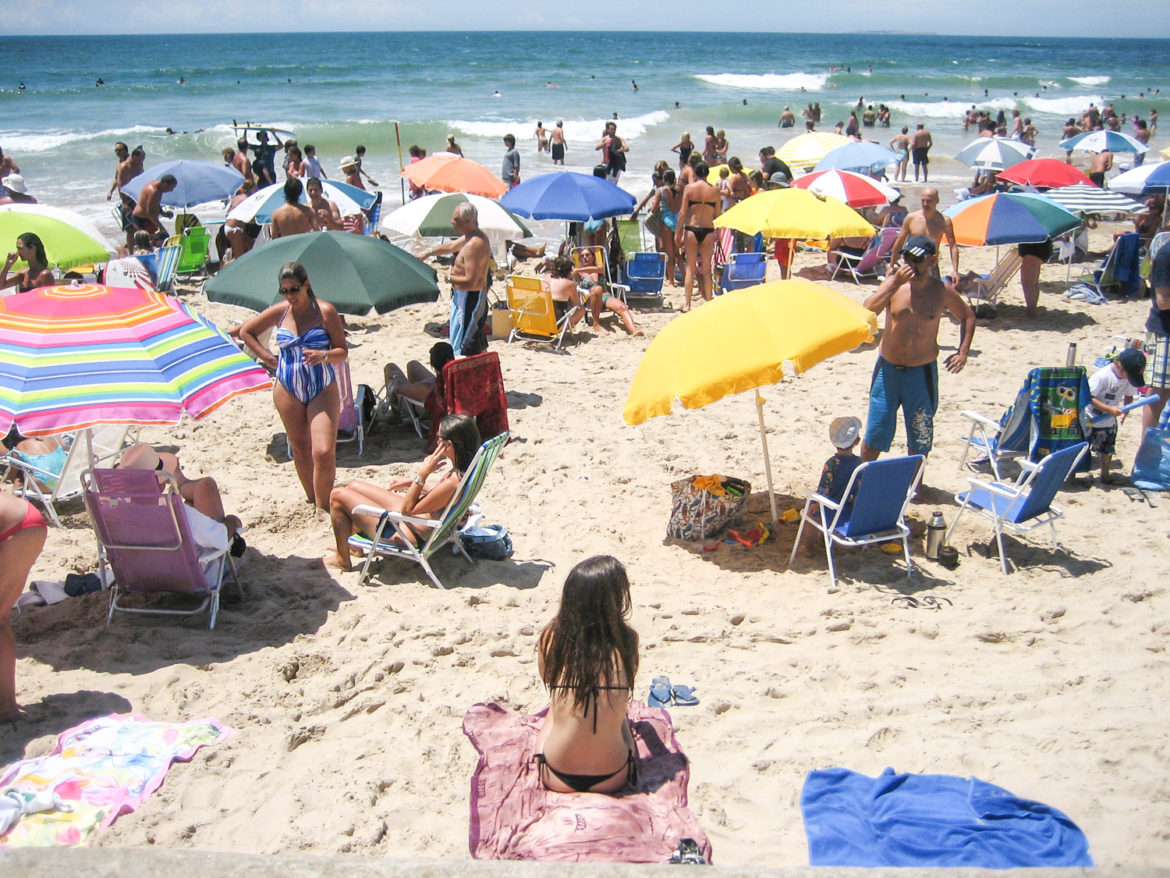Situated on the point that divides the Plata River and the Atlantic Ocean, Punta del Este is Uruguay’s most popular beach resort town.
While there are numerous art museums, trendy boutiques and world-class restaurants, the main draw of Punta del Este is its beaches. We came here to check out the scene on a day trip from Montevideo, just two hours by bus.
As a go-to destination for South America’s wealthy, staying overnight in Punta del Este can be prohibitively expensive. While considered a playground for the elite, the good news is that all of its beaches have free public access. So you can rub elbows with the jet-set crowd and then head back to your respective humble abode.
Our brief time here was primarily spent wandering Las Ramblas, the boardwalk that stretches along the coastline.
Like the names suggest, Playa Brava (“fierce”) has much rougher waters and is situated along the Atlantic Ocean; while Playa Mansa (“tame”) is more tranquil along the delta of the Plata River. The dividing line of the two beaches is marked by the town’s most famous landmark, is La Mano (“The Hand”). This can’t-miss sculpture, created by Chilean artist Mario Irarrázabal, depicts a giant hand emerging from the sand. The “drowning” hand serves as a warning to swimmers about the beach’s treacherous waters. Nearly 50 years later, the hand remains and Irarrázabal has gone on to create similar replicas in Spain, Chile and Italy.
Against the backdrop of high-rise hotels and apartments, a steady parade of people of all shapes and sizes stroll up and down the beach. Families play in the ocean waves. Sunbathers sip mate while turning a golden bronze hue. Young people gather in big groups, laughing and catching up. It is a busy, but fun scene.
Eventually, we left the frenetic pace of the beach and transitioned to a more peaceful area.
As sand gave way to more of a rocky coastline, a handful of fishermen cast their lines out to the sea. We passed a lovely brick shrine, Nuestra Señora de la Candelaria, dedicated to the patron saint of Punta del Este. Apparently, it marks where the first Europeans came ashore to celebrate Holy Mass on what is now, present day Uruguay.
Moving inland, we visited a pretty blue church of the same name, Iglesia Candelaria and the El Faro lighthouse, offering a glimpse of the town before it was built up. Continuing through the town’s picturesque neighborhoods, we eventually wound up at the Port of Punta del Este . Here, rich tourists on their multimillion dollar yachts are anchored next to humble fishermen selling their fresh catch of the day. People mill about, eat ice cream and watch the playful sea lions. It’s as if two worlds collide – the wealthy among the working class. And of course, us, the wanderers, taking in the scene – before heading off once again.

